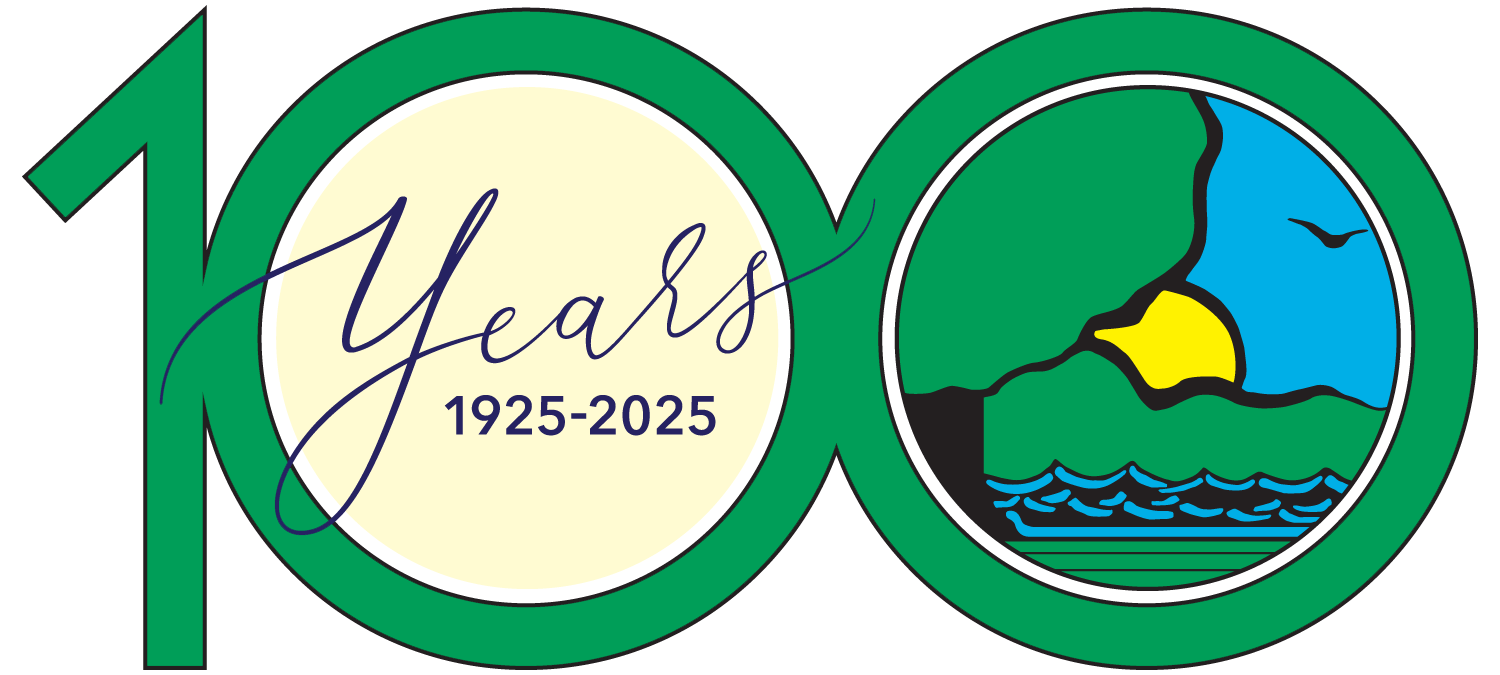
All photos by Tamima Itani.




All photos by Tamima Itani.
In spring of 2025, federally endangered piping plovers will fly north from their winter homes to begin another nesting cycle in the Great Lakes region.
Brad Semel, regional recovery specialist with the Illinois Department of Natural Resources (IDNR), along with a host of volunteers and staff members of several environmental groups, are hoping to greet two captive-bred plover pairs that nested in Waukegan and Chicago last summer. They also hope one or more of the chicks that fledged from the plover pairs in 2024 will return to the Lake Michigan shoreline in Illinois and raise families.

Semel and others have been working for many years to protect the piping plover in Illinois. With their help, the sandy-colored 7-inch-long beach-loving birds have made history several times over in the state where they once were a common summer resident along the Lake Michigan shoreline.
In 2023 eggs were retrieved from several nests on New York beaches after a parent from each nest had been killed by a predator.
“Under the special care of a team of veterinarians assembled from around the country, the chicks were hatched and reared at a field station,” Semel said. Soon after they learned to fly, Semel released the chicks in prime plover habitat in Chicago and Waukegan. It was the first time captive-reared chicks had been released outside of Michigan.
Three of these plovers made history again when they returned the spring of 2024 to breed and raise young right where they were released.
Pepper and Blaze, named for native dune plants on the sandy beaches where they nested, raised three chicks in Waukegan. Meanwhile, Sea Rocket, Pepper’s sibling, showed up where she had been released at Montrose and paired with Imani, another piping plover who had been waiting at the beach for several summers to find a mate. They raised one chick to adulthood, which migrated south last summer.
Semel recalled a May day in 2024 when Waukegan Beach was clouded in a heavy fog and a storm had set in.
“I was thinking about all the challenges the birds face when migrating; from predators to lights on buildings the birds could have flown into,” he said.
Then he heard a melodic note. It was the call of a piping plover, and when he saw the unique bands on the bird’s legs, he knew it was Pepper. Pepper had last been seen in Florida, where he spent his winter after leaving Waukegan.

“He came back to the very beach he spent only 24 days of his life the previous year,” Semel said. “It is an amazing migration story.” A day later Blaze was by Pepper’s side ready to start a family. At nearly the same time, Sea Rocket was being courted by Imani at Montrose Beach.
“It’s been a very long time since piping plovers were nesting in two different locations along the lake shore in Illinois,” Semel said. In 1876, 30 pairs of piping plovers were breeding along the beach in Waukegan with numerous others along the Lake Michigan shoreline near Lake Calumet. A dramatic population decline occurred in the 1940s in Illinois, due to recreational and industrial buildup. According to the Great Lakes Piping Plover Recovery Effort, Great Lakes shorelines historically hosted nearly 800 piping plover nesting pairs each summer. They disappeared from the shores of Illinois completely by 1955. In 1986, the plover was placed on the federal endangered species list. By 1990, only 13 pairs were left in the wild.
Captive-rearing programs, habitat restoration, volunteer monitoring on both the nesting and wintering grounds and other actions have helped the species.
Each plover is banded and followed as much as possible through its nesting cycle as well as at its wintering habitat.
“Right now, most of the pairs are concentrated in Michigan, so helping them return to breed where they historically nested in Illinois is important,” Semel said. “It’s very promising now that we can recover the historical distribution of these birds.”
“There are a remarkable number of volunteers and professionals who are putting in so much effort to see these birds return,” Semel said. “It’s just such a satisfying experience.”
One of the piping plover monitors, Carolyn Lueck, said she spent all winter of 2023-2024 anxious to hear news about the captive-reared birds released on the Waukegan Beach. When she learned Pepper and Blaze were spotted wintering in Florida and North Carolina, respectively, she rejoiced.

Given captive-reared piping plovers have at least a 79 percent rate of return to the site they were released from, she had high hopes for good news in spring.
“When I saw them return to Waukegan, right where they were released, I was elated,” she said. “It was an immense sense of relief and excitement for their future.”
Lueck volunteers with a nonprofit group, Sharing Our Shore, a partnership between Lake County Audubon Society and the city of Waukegan. The program was created to help protect the plovers and the beach system where they nest, and where other birds migrate and rare plants grow. The group provides educational programming and public outreach materials about the birds and the critical lakefront habitat for the Waukegan community.
Blaze and Pepper paired up as soon as their toes hit the sand. Lueck recalled watching Pepper make several scrapes in the sand and Blaze check out those scrapes. Lueck, along with other volunteers, observed them courting and mating and then tending to their nest of four eggs.
Pepper is actually the grand-nephew of Monty and Rose, two piping plovers who attempted nesting at a gravel parking lot at Waukegan Beach in 2018. Due to heavy traffic, the eggs were retrieved from their nest, hatched in captivity, reared and then released at a beach in Michigan.
In 2019, Monty and Rose returned to Illinois to raise two chicks at Montrose Beach. They came back in 2020 and raised three more chicks, and again in 2021 when they fledged two chicks. In 2022, Monty returned to the beach, but later perished. Rose never returned.
Tamima Itani, the lead plover monitor at Montrose Beach, has witnessed the rare birds’ successes and failures since the day Monty and Rose first nested there.
She manages the schedules of volunteers, creates educational materials and coordinates with local, state and federal agencies. Her work was rewarded when IDNR named her as one of 11 outstanding volunteers of the year in 2024.

“Itani has been instrumental in the protection of piping plovers and their habitat,” IDNR Director Natalie Phelps Finnie said in a statement.
Itani was there when a piping plover named Imani hatched in 2021 from Monty and Rose’s nest.
“He returned in the spring and summer of 2022 and 2023, commanding an outstanding territory but having no mate to share it with, nest, and raise chicks,” Itani recalled.
She also was there when one of the captive-reared chicks from 2023, Sea Rocket, left for wintering grounds.
“On that day, she had fishing line caught around her foot and our hopes for her return were low,” Itani said.
“But she returned to where she was released and she and Imani wasted no time pairing up, mating, and establishing a nest with four eggs,” Itani said. “Throughout their incubation period, they stayed on the nest, braving lightning and thunder, torrential rains, hail, wicked winds and a seiche event that flooded the entire beach in water.”
During that time IDNR and its partner agencies the U.S. Fish and Wildlife Service, U.S. Department of Agriculture and Chicago Park District, spent many hours on the beach contemplating ways to rescue the eggs from being flooded.
“We literally had to raise the Montrose nest more than a foot because it was established in a flood-prone area of the beach,” Semel said. “Watching a wall of water wash around the nest as the mesotsunami struck on June 25 was an image that will be etched in my memory.”
This new technique was later deployed in Pennsylvania where it saved another nest. Illinois continues to lead in innovative ways to save plovers.
In September, Sea Rocket and Imani’s surviving chick, Nagamo, left for winter grounds. Pepper and Blaze’s chicks, Juniper, Sage and Willow, left towards the end of August.

As of November, Blaze, Pepper and Sea Rocket have been reported on wintering grounds in North Carolina, Florida and Louisiana. All survived some nasty weather and hurricanes that had the monitors worried.
Volunteer monitors at both locations are overjoyed and cautious at the same time as they work to educate others about the need to protect not only the rare birds, but also the shoreline ecosystem in which they live.
The monitors will be back at their stations in spring of 2025 waiting for the return of their beloved plovers, and the chance to observe them mating and raising young to keep the population growing.
Sheryl DeVore writes environment and nature pieces for regional and national publications and has had several books published, including “Birds of Illinois” co-authored with her husband, Steven D. Bailey.
Submit a question for the author